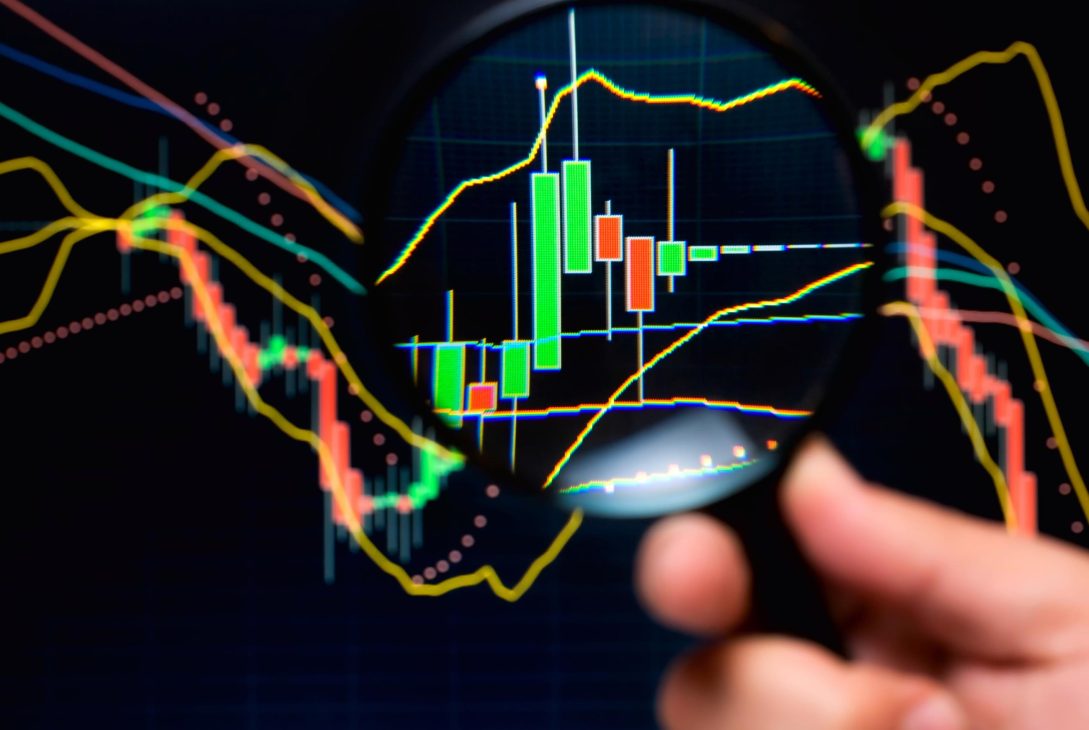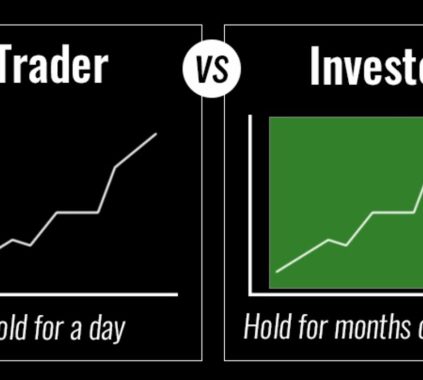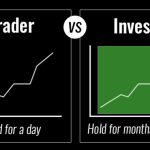Introduction
Welcome to “Become a Crypto Wiz: Essential Technical Analysis Secrets Unearthed“! If you are new to cryptocurrency trading, technical analysis is one term you must have come across at some point, but might not understand its significance completely. Alternatively, if you are an experienced trader looking for ways to up your game and make more money, this blog article has something for you.
In this blog post, we will explore the concept of technical analysis in relation to cryptocurrency trading hence its applicability for rapidly changing markets. We shall consider fundamental issues of technical analysis featuring candlestick charts and price patterns alongside examining advanced areas such as key indicators and Fibonacci retracement.
Why does technical analysis matter so much in crypto trading? This allows traders to analyze previous market happenings with respect to potential trends or patterns that could be used by investors in decision making. Consequently, this can lead traders into gaining an edge over others thereby increasing their chances of succeeding in the volatile crypto market.
Through out this blog we will also talk about the common errors that people make during the process of carrying out technical analysis and how they can avoid them. We aim at giving you all the knowledge and skills necessary to become a crypto wiz and maximize your trading experience.
Therefore, irrespective of whether beginners or veterans, let us unveil these vital aspects concerning Cryptocurrency Technical Analysis that will enable us trade confidently with accuracy. Be ready to become a genius on cryptocurrency matters as far as trading is concerned.
Technical Analysis: Why It Is Important In Crypto Trading.
Trading crypto, where the market sleeps not and the chances of making money are limitless. As a trader, you are always looking for that edge that will enable you to make informed choices among the volatile and ever changing trends in this first moving market. One of your most powerful tools is technical analysis. We shall discuss what technical analysis is, why it matters in crypto trading over this chapter and how it is different from fundamental analysis as well as the pros of using technical analysis to become a successful crypto wizard.
What Is Technical Analysis?
It involves the use of charts, indicators and other tools to predict future price movements. The basic idea behind technical analysis is that history tends to repeat itself and therefore by studying past market behavior we can make educated guesses about future market movements.
Why Is It Important In Crypto Trading?
Prices in cryptocurrency markets are highly volatile and speculative such that they can change drastically within a short period. Technical analysis helps traders make sense of this chaos and base their decisions on data rather than emotions. It represents market movement graphically making it easier to identify trends or patterns. Traders who understand these patterns can predict possible price changes hence adjust their strategies accordingly.
How Does It Differ From Fundamental Analysis?
At times referred to as quantitative or statistical research in some circles, fundamental analysts concentrate on economic, financial, qualitative aspects when determining an asset’s intrinsic value. But with technical analysis dependence is based entirely on historic prices together with volume data pertaining to trading shares in large quantity especially if one has learnt about forex trading for beginners 2019 guy named steve mauro which was very helpful since he trained on how someone can get started with his products like ,how easy it was going through his pa course.Analysis thus look at broader view whereas; fundamental look at longer time frame..In the event there are several influences affecting this highly speculative market i.e., cryptocurrencies being traded, technical analysis tends to provide timely and precise information.
Benefits of Using Technical Analysis in Crypto Trading:
1. Helps Identify Trends: This means that traders can easily know when the market is in an uptrend, a downtrend or a sideways pattern thus allowing them make better decisions in relation to their trades.
2. Provides entry and exit points: These are important for determining levels of support and resistance during trading.Technical analysis helps to identify key levels, which are usually based on previous prices movement, enabling the trader to time his trades more accurately.
3. Helps manage risk: Traders can place stop-loss orders at various levels using technical analysis to limit potential losses.Consequently it aids for proper risk management where by traders can limit their loses in case of unpredictable changes in market conditions.
4. Combines Well with Other Strategies: Sometimes technical analysis is used together with other strategies such as fundamental analysis so that the investor has a wider understanding of what’s happening in the market.Technically analyzing helps; this is because one uses different methods whenever he or she wants to make a well informed decision.
Conclusion
Thus, technical analysis is an influential implement that can be employed by traders to help them navigate through the intricate and volatile realm of crypto trading. With this knowledge about market trends, entry and exit points as well as risk management; the odds of traders being successful would increase. However, it should be recognized that technical analysis does not guarantee one’s ability to predict the direction in which a financial market will move. It must thus be used with other approaches in combination with proper risk management so as to achieve optimal results. The next chapter will go deep into candlestick charts and price patterns which is another vital component of technical analysis. Watch out for the next lesson on your way to becoming a crypto wiz.
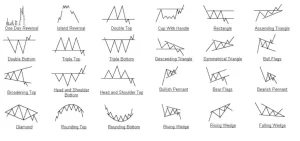
Understanding Candlestick Charts and Price Patterns
As a crypto trader, it is essential to have a sturdy knowledge of technical analysis. This will allow you to make the proper decisions while trading. One of the most trusted tools in technical analysis is candlestick charts. In the following chapter, we will explore candlestick charts and their uses. We’ll also explain how to interpret them in order to make successful trades.
What are candlestick charts?
Originating from Japan, these types of charts have been used by traders since the 18th century. Candlestick charts represent price movements visually over a period of time. These periods range from minutes all the way up to months! Each individual stick on this chart symbolizes the opening, closing, high, and low prices for that specific time frame.
How do I read them?
The body? It represents the opening and closing prices during that given time period. If it’s filled or colored then this means that the closing price was lower than its opening counterpart. On the other hand, if it’s empty or white then congratulations! You’ve made money because it indicates that your closing price was higher than its opening value! Being on top has never felt so good! Finally, we have wicks or shadows down below –these show both highest and lowest prices reached throughout that period!
Other Uses
Candlestick charts also can be used to identify trends in markets as well. A pattern with an uptrend is shown through higher highs and higher lows . On flip side,a downtrend displayed with lower highs and lower lows .Knowing these patterns allows traders to understand what direction any given market may go!
Common Candlestick Patterns
There are various types of patterns that traders use day in and day out . Some of those tradings include :
1.Hammer – With only a small body at bottom of long wick ,a hammer sticks out amongst all others . It shows potential reversal when appearing at the end of a downtrend .
2.Hanging Man – This pattern is the opposite of a hammer. While still having small body but long wick, it appears at the top of an uptrend instead . Traders use this to indicate potential reversals as well.
3.Engulfing – The last one that we will mention today is engulfing. This patten occurs when larger candlestick completely engulfs the body smaller previous candlestick! Kinda like a monster eating other stick patterns . It can also signal a change in market sentiment and potential trend reversal.
When to Buy or Sell?
Candlesticks charts are also used to determine entry and exit points for trades. To find these points, traders look for specific patterns mentioned above to identify any buying or selling opportunities. Combining support and resistance levels with technical indicators confirm their decisions.
Now remember ! It’s important not to rely on candlestick charts alone! They should always be paired with other technical analysis tools to get more comprehensive understandings of any given market!
To wrap things up, candlestick charts are an absolute must for technical analysis and give us a sh*t ton of info on market movements. Once you know how to read them, you’ll make better decisions and your trading strategies will improve significantly. But don’t just use these charts by themselves though, combine them with other indicators to get the most accurate analysis possible. Keep an eye out for our next chapter where we’ll talk about important indicators like moving averages, RSI, and Bollinger Bands.
Key Indicators: Moving Averages, Relative Strength Index (RSI), and Bollinger Bands
The technical analysis is a critical tool for every cryptocurrency trader who seeks to be a well-informed market player. Essentially, it examines past price changes while relying on different indicators to predict future trends in the market. We delve into three prominent indicators used in technical analysis – moving averages, Relative Strength Index (RSI) and Bollinger Bands in this chapter.
Explanation of Moving Averages:
Moving averages are one of the most frequently employed technical analysis tools. They involve averaging a selected number of price points over a certain duration. Through this technique, price fluctuations are smoothed out enabling traders to see the overall trend.
Simple moving average (SMA) and exponential moving average (EMA) represent two types of moving averages. While SMA gives equal significance to all prices, EMA gives much weight to recent ones. Consequently, traders use moving averages for determining support and resistance levels as well as identifying trend direction.
How to Use Moving Averages in Technical Analysis:
In technical analysis there are various ways how moving averages can be put into practical use. One common approach is through observing when different moving averages cross each other. For instance, if shorter-term MA crosses above longer-term MA then it’s referred as bullish signal or vice versa.
Moreover, another way that investors could utilize these figures is by seeking support and resistance areas using them as reference points. Whenever an asset price touches its respective MA level, either can act as a support or resistance line. With this information at hand they may enter or leave trading positions accordingly.
Understanding the RSI and Its Role in Identifying Overbought and Oversold Conditions:
Relative Strength Index (RSI), which is plotted on a scale from 0-100, is considered a momentum oscillator since it measures the speed as well as change in prices over time. It helps identify overbought and oversold conditions in the market.
A figure of 70 or above implies overbought prices while one below 30 means oversold. Such information can help a trader to know when to enter or exit a trade. In addition, an overbought market may be a sign for potential reversal while the opposite would mean an opportunity to buy.
Utilizing Bollinger Bands for Measuring Volatility and Predicting Market Trends:
Another popular indicator used in technical analysis is Bollinger Bands. They have three lines: simple moving average (SMA) at the center with two standard deviation lines above and below it, which help traders measure volatility and identify potential breakouts or trend reversals.
When prices go close to upper band, it indicates that they are being overbought while if they move close to lower band it signals that they are oversold. Also, when bands compress together this might indicate low volatility period and at times expand whenever there is increased volatility.
Combining These Indicators for Stronger Analysis:
Though one can use each of these indicators separately, their combination enables stronger analysis of the market as a whole. For instance, a trader might look out for bullish crossover between moving averages whilst RSI is within oversold region. This shows possibility of going long on this asset since trader expects upward price move.
A bearish crossover of moving averages could be observed by a dealer when the RSI is in the overbought area, which may indicate a sell signal. When multiple indicators are used together, traders can strengthen their analysis and trade more knowledgeably.
Conclusion:
Technical analysis refers to making use of different types of indicators such as Moving Averages, RSI, Bollinger Bands and many others. The strength of each one varies among them and can provide useful market information. Traders can enhance their trading decisions through appropriate blending of these signals thus improving their analytical skills.
Using Numbers in Nature to Create the Fibonacci Retracement
In trading, Fibonacci retracement uses these numbers to identify potential levels of support and resistance in a market. These levels are calculated through drawing a trend-line from two extreme points on a chart which is usually a high and a low. Then, the Fibonacci ratios of 23.6%, 38.2%, 50%, 61.8% and 78.6% are used to plot retracement levels for an asset that normally indicates where prices are likely to retrace before continuing with its trend.
Fibonacci retracement levels act as potential entry and exit points for traders’ trades when using technical analysis. These act like support or resistance level areas where the price of an asset might bounce off or break through at any moment. Other than setting stop-loss levels, traders can also set take-profit orders (Lim & Sweeney, 2019).
Besides this, other technical indicators like moving averages and oscillators work alongside Fibonacci retracement levels to confirm probable reversals of trends (Zeebe & Ritterbush, 2019). A combination of several indicators around one Fibonacci retracement level increases chances of profitability.
How to use fibonacci retracement in crypto trading?
Fibonacci retracement can be applied to any market including the volatile world of cryptocurrency trading (Majdanac et al., 2021). To use this tool effectively, traders should first identify a strong trend in the market then draw a fibo from either swing high to swing low in downtrend or swing low upswing high during uptrend.
Traders may consider entering positions near the 23.6% or even the 38.2% lines where they could see possible supports or resistances respectively (Martinez et al,, 2017). Also considered strong supports/resistances is the line at fifty percent during entry into trades by these individuals (Majdanac et al., 2021). They can then have their stop-loss orders set below the levels of either 61.8% or 78.6% hence limiting risks associated with such ventures.
A Practical Example of Fibonacci Retracement
In order to gain a better understanding of how Fibonacci retracement works, let us consider an actual instance in real life. In 2018, Bitcoin faced a severe downtrend that saw its price fall from nearly $20,000 to as low as $3,122. By making use of Fibonacci retracement, it is clear that the 61.8% proved to be a major barrier with the price testing this level multiple times but being unable to break above before resuming its downward trend.
Alternatively, in 2020, Bitcoin experienced an intense uptrend which moved its value from a minimum of $3,858 to the maximum at about $41,941. In this case scenario on the other hand 38.2% was firm support where prices bounced off it before continuing upwards.
Using Fibonacci retracement levels in both instances resulted in potential points of entry and exit for traders ultimately leading them into profitable trades.
In Conclusion
Fibonacci retracement is one of the powerful tools used by technical analysts that can give traders possible support and resistance levels for informed trading decisions. This can be used parallel with other technical indicators thus enhancing higher winning probability of any transaction made. It is through thorough knowledge of applying it in cryptocurrency trade that investors can fully harness the power of fibonacci retracement making their strategies more reliable and themselves more confident when trading cryptocurrencies
Looking out for support and resistance levels can be a great way of finding the entry and exit points in the trade.
Technical analysis is one important tool that new cryptocurrency traders can rely on for better trading decisions. Among the technical analysis tools, supporting and resisting levels forms an integral part of this. Conversely, this may act as clues to know when to enter or exit from any trade. In this chapter, we are going to understand what support and resistance levels mean as well as how they can be used effectively in crypto trading strategy.
Defining Support and Resistance Levels in Technical Analysis:
Supporting and resisting levels are the price points on a chart where there is significant buying or selling pressure on an asset. The Market determines these levels through reacting against past movements of prices. On top of that, support levels protect against further depreciation because buying pressures are greater than sell pressures. This contrasts with resistance level which guard against appreciation through strong sells.
How to Identify These Levels on a Chart:
On the price chart different methods are available for identifying supporting and resisting levels. One common approach entails checking areas where the price has previously reversed several times upwards or downwards oscillations have occurred over time at the same place. These areas can be designated as either support or resistance zones across which prices may not break easily unless a strong catalyst occurs in order to move them beyond that range even if that means ascending rapidly or declining sharply finally hitting a wall whilst moving up slowly instead . Another method is drawing trend lines that connect highs or lows made by prices trending while rising up; such lines may function as dynamic supports for those who want help plotting their orders correctly without needing too much effort spent thinking about each individual line’s position relative other ones since each line should intersect with some other before proceeding backwardwards along its length until reaching zero again near higher values but below lower ones until then should rise back toward themselves whenever possible within those limits only after having gone around once another so soon afterwards, followed shortly thereafter by some sort of upward bounce…thus making this particular type even more dynamic than usual since one might say they resemble series continuous curves all being parallel throughout large parts whereas their contours change dramatically depending mostly upon where look above below according direction view gives impression that none exists anywhere except right along along certain line segment connecting points any look; actually are everywhere but nowhere near enough distance since such an area contains infinite number similar regions so must exist everywhere else. Upwards trend lines also function as support levels.
Using Support and Resistance Levels for Setting Stop-Loss and Take-Profit Orders:
Support and resistance levels can be used to set stop-loss and take-profit orders for trades. The support level is an essential point to consider when purchasing a security because the price may revert its direction downwards when it breaks through there. Similarly, the resistance level acts as a stop loss in case of selling position. In addition, target levels should be placed around or before reaching next supports or resistances depending on which side you want your item directed.
Tips for Effectively Using Support and Resistance Levels in Crypto Trading:
1. Combination with other indicators: It is important to combine these key areas with other technical analysis tools.
2. Using Different Time Frames: The choice of time frame will determine the kind of supporting/resisting zone which can also differ from one period to another.
3. Consider Volume: A high volume on a trade confirms strong support or resistance zones while low trading volume may suggest unimportant ones.
4. Be Flexible: As breaking zones are evolving with time, traders have to adjust their strategies.
5. Practice and Observe: Detecting supporting and resisting levels requires practice with keenly observing patterns seen on charts as well as back testing using historical data until personal abilities have been polished into something like second nature while keeping our eyes open at all times looking out…
To conclude, support and resistance levels are important for crypto traders to identify points at which they should enter or exit trades. They can also show how the market feels and the probable direction of prices. By knowing how to find and employ these levels, technical analysis skills among traders can become better and consequently, their trading judgments will be well informed. Always remember that it is best to add support and resistance levels to other indicators when making a complete analysis as well as remain open-minded when approaching this issue. You can learn how to use support and resistance lines in your cryptocurrency trading strategy with time and practice.
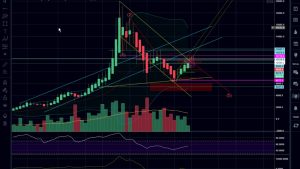
Combining Multiple Indicators for Stronger Analysis
Analysis of multiple technicalities can help traders make better choices. It is about studying past price and volume data, which identifies patterns that can be utilized to predict future prices. Combining several indicators yields stronger analysis even if each indicator provides valuable insights on its own. In this chapter, we will consider the concept of confluence in relation to technical analysis as well as how different indicators can effectively be combined in order to make more accurate predictions.
The Concept of Confluence in Technical Analysis:
Confluence refers to a number of factors that support a given trade decision. With regard to technical analysis, it implies using varied indicators to confirm possible trends or price behaviors. This method maintains that trading accuracy increases if multiple indicators point towards the same direction.
It also helps mitigate risks by aiding in filtering out false signals and thereby reducing chances of making an erroneous trading decision. However, confluence does not guarantee profitable trades but it highly increases the accuracy level of predictions.
How to Combine Different Indicators for More Accurate Predictions:
There are several ways through which indicators may be combined so as to produce more robust analyses. One way is through use of diverse types such as trend-following and oscillator type indicators. Trend following indicators like moving averages indicate the market’s direction while oscillators for example Relative Strength Index (RSI) measures the strength of the trend.
Alternatively, traders can combine those with different calculation methods e.g., Bollinger Bands (which measure volatility) and Moving Average Convergence Divergence (MACD) (which identifies reversals) can provide a comprehensive view on what is happening in the market.
Also, considering time frame is crucial when one has decided on combining two or more indicators. Short-term indicators such as RSI may confirm signals from longer-term ones like moving averages among others hence enabling traders come up with precise forecasts both for short-term deals and long-term transactions.
Real-Life Examples of Combining Indicators for Stronger Analysis:
One such example is shown below, where indicators have been combined to provide stronger analysis. As shown in the chart below, the price of Bitcoin (BTC) has trended upwards as indicated by the 50-day and 200-day moving averages. However, the RSI was in overbought territory suggesting a reversal may be imminent.
Image Source: TradingView
To confirm this potential reversal, we can combine the RSI with the Bollinger Bands. The middle chart shows that BTC’s price broke through the lower band indicating a change in trend. This combination of indicators can assist traders to either close their positions or consider shorting BTC.
Image Source: TradingView
The Importance of Backtesting and Adjusting Your Strategy:
While combining several indicators together might improve prediction accuracy, it is important to backtest your strategy before employing it during live trading. Backtesting entails using past data for testing how effective a trading strategy is. It helps traders notice problems with their approach and thus enables them correct those errors accordingly.
Besides, it is crucial to constantly monitor and modify your strategy as market dynamics change. What worked well in the past may not be as effective in the present situation. You can keep up with market trends and make better trading decisions by continuously evaluating and adjusting your strategies.
Finally, using multiple indicators for technical analysis can enhance its strength. It reduces noise levels from false signals, increases chances of successful trades and lowers risks involved. However, one must backtest and fine-tune their strategy on a regular basis to make sure it suits different market situations. Traders who practice consistently are able to combine indicators perfectly over time become tech geeks in technical analysis.
How to Avoid Common Mistakes in Technical Analysis
Technical analysis is one method that is often popular among traders for the assessment of market trends and informed trading. It can be a powerful technique, but it has pitfalls as well. There are common mistakes made by many technical analysts at beginners’ stage of trading which may lead to poor results. These mistakes and also how to avoid them will therefore be discussed under this chapter so that your analysis can improve making you a successful crypto wiz.
The most common fault done by beginner traders in technical analysis is over reliance on indicators. Indicators are helpful for insights on market trends; however, they should not be the only thing considered in your analysis. You have to remember that indicators are based on past data and do not always accurately predict future price movements. This means they have to be used alongside other forms of analyses such as price patterns and market trends.
Another mistake is where no clear trading strategy exists as it usually changes depending on the fluctuations in the market. You need to have a proper trading plan that you must follow even when the market becomes volatile. In so doing, you will avoid making impromptu decisions which may result into losses. A good trading strategy should encompass specific entry points, exit points, techniques of risk management and set of rules.
Additionally, lack of discipline is another error made by those who engage in technical aspects of analysis. It is very easy to make emotional decisions while being carried away with excitement from the market. However, trade relying on emotions can lead into irrational and hasty trades that lead into losses’. To shun this behavior it calls for discipline hence sticking on what has been already charted down despite any unpredictable nature o f the trend.
Another mistake overlooks big picture looking only at short-term trends. Thus, instead of considering short term price movements alone, it would make more sense analyzing overall market trends. Thus you get a better view about the market and make better trading decisions.
How to improve your analysis and avoid these mistakes:
These are some ways to avoid these common mistakes; you should have a good understanding of technical analysis, continually educate yourself on new techniques, and always study. It is also important to have a trade plan that you follow but at the same time be flexible enough when it needs amendment. Moreover, it is highly recommended that one remains disciplined despite the performance of unpredictable markets.
The significance of being disciplined and sticking to your game plan:
In any type of trading including technical analysis, discipline matters most. Avoid making impulsive or emotional choices which may cause loss by keeping discipline. Secondly, sticking on what has been already charted down helps in concentration as well as consistency hence leading into many successful trades in the end.
Final tips for becoming a successful crypto wiz through technical analysis:
To become a successful crypto wiz through technical analysis requires practice, patience and discipline. Continuously educating yourself, being updated with market trends and having a clear trading plan are important aspects to remember too. Finally, do not allow emotions bias your thinking rather treat every investment rationally and objectively before making any stock purchase decision based on certain strategies.
Conclusion
In summary, technical analysis is a very powerful tool for traders of cryptos, but it does not come without challenges. By avoiding the most common mistakes, being disciplined and having the right understanding in technical analysis you can improve on your analysis and become a successful crypto wiz. Always trade with caution and never stop learning or adapting your strategies.
One thing that should be taken away from this blog is that using several indicators together makes an analysis stronger. Thus every indicator has its own strengths and weaknesses; however, when they are used collectively, they give a more comprehensive insight into the market which facilitates better decision making by traders. One should also be aware of common mistakes like over reliance on one indicator or ignoring fundamental factors in technical analysis and work hard to avoid them.
As such becoming a successful trader means always needing to know new techniques and strategies in technical analysis due to the continuously evolving and increasingly complexed world of crypto. Being adaptable by constantly studying new methods can make someone become a crypto wiz increasing their chances of success in this ever changing market. It may appear challenging at first glance but with time as well as commitment anyone can master those skills of technical analysis that are so valuable in the world of cryptocurrency.
In conclusion, we will do well to remember that there are many other tools available for use by any trader out there apart from just technical analysis alone because it is only part of the story. So coming up with informed trading decisions where risk management strategies have been employed requires the use of both fundamental analyses as well as other forms of analyses including even small things like technical ones. With the right mindset and approach, everyone is capable of employing technical analysis to become a winner at cryptocurrency trading. Hence continue learning, maintain discipline as well as watch global trends in order to become a crypto wiz.

